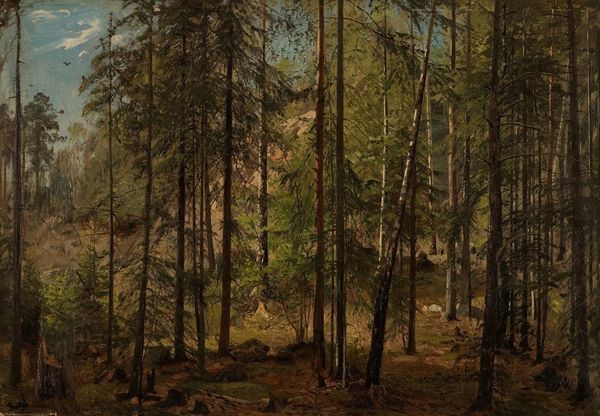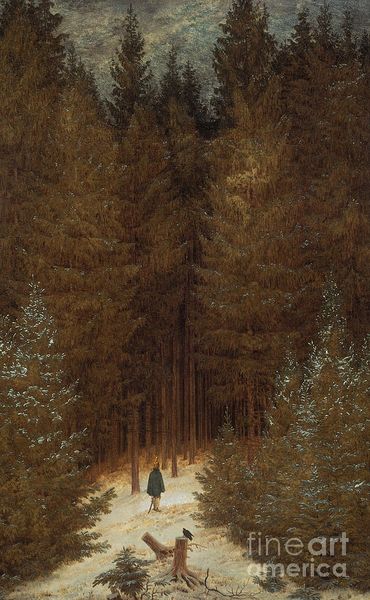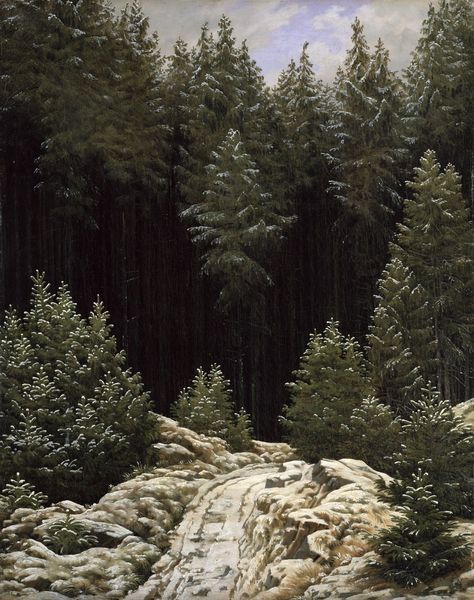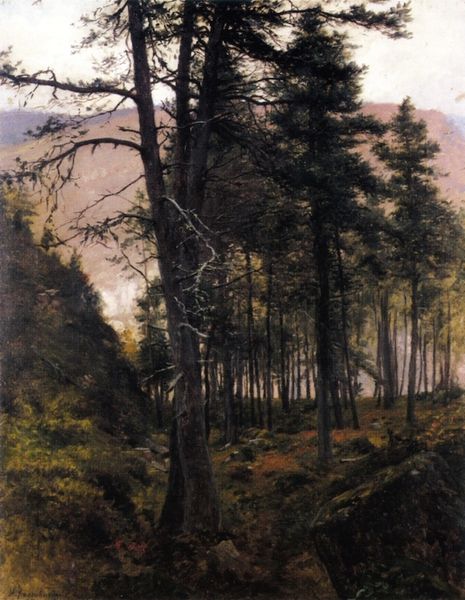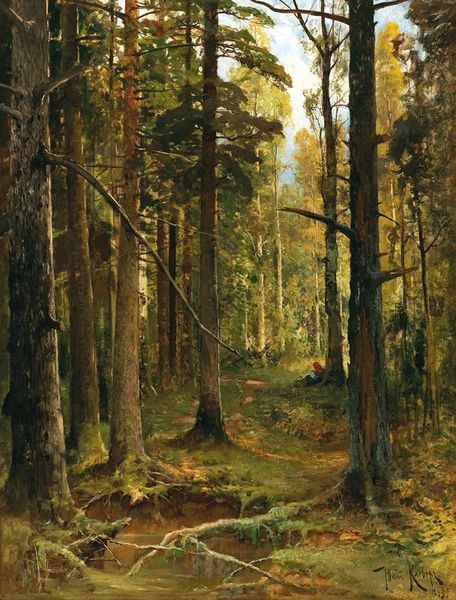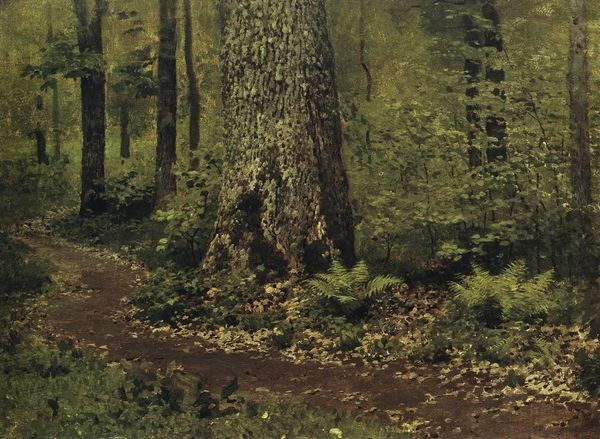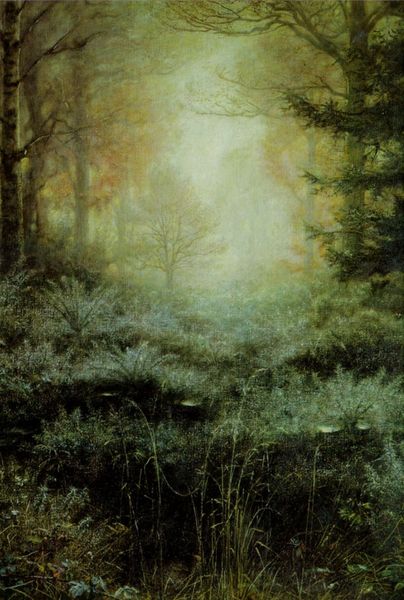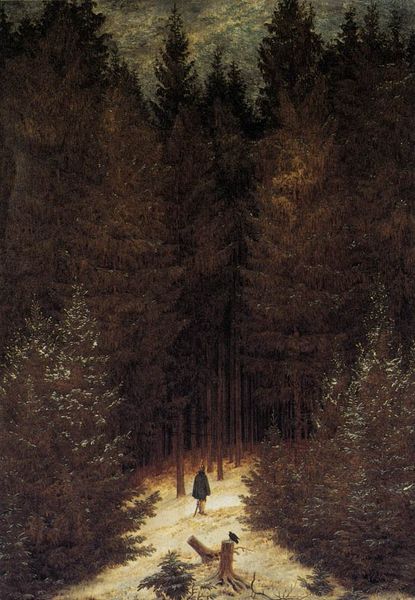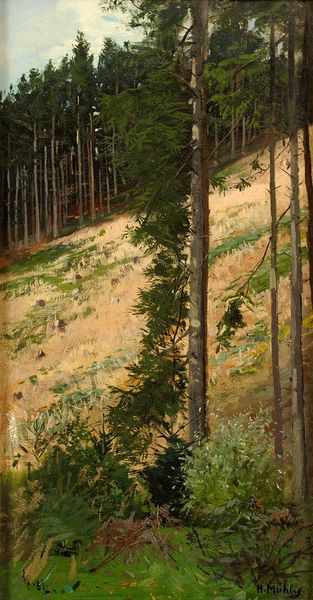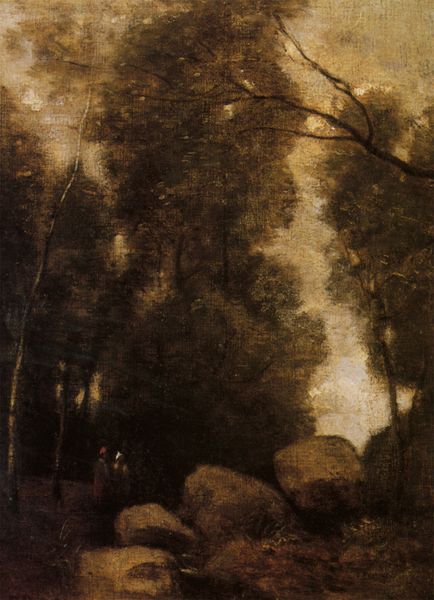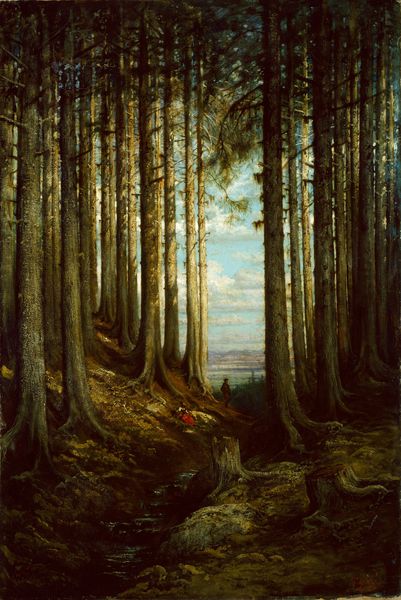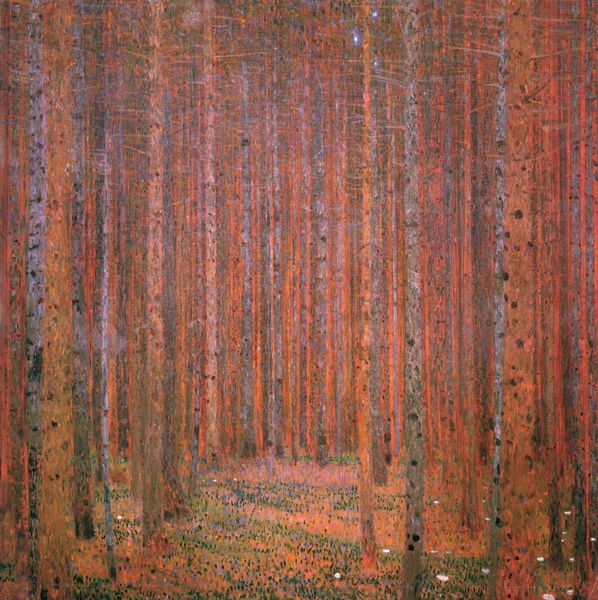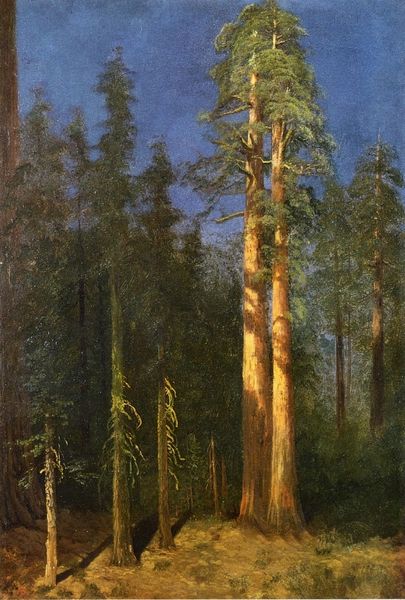
Dimensions: support: 2668 x 1828 x 34 mm
Copyright: © Ged Quinn | CC-BY-NC-ND 4.0 DEED, Photo: Tate
Editor: So, this is Ged Quinn’s "Cross in the Wilderness." It's a large painting, but the somber palette and dense forest evoke a feeling of claustrophobia. What stands out to you formally? Curator: The composition presents a stark contrast. The verticality of the closely packed trees is disrupted by the horizontal plane of the deforested foreground. Notice how the artist manipulates light to create depth, yet simultaneously flattens the picture plane. What effect does this have, do you think? Editor: It's unsettling. The way the light catches on the cross-shaped structure amidst the felled trees creates a focal point but feels oddly artificial, staged almost. Curator: Precisely. The tension between the realistic depiction and the symbolic form invites a deeper reading. The material qualities, the brushstrokes themselves, contribute to this feeling of unease. Editor: I hadn't considered the texture adding to the emotion. Thanks for pointing that out.
Comments
tate 6 months ago
⋮
http://www.tate.org.uk/art/artworks/quinn-cross-in-the-wilderness-t11976
Join the conversation
Join millions of artists and users on Artera today and experience the ultimate creative platform.
tate 6 months ago
⋮
Cross in the Wilderness 2003–4 is a large oil painting by the British artist Ged Quinn depicting a gloomy woodland setting. In the background of the painting stands a substantial cluster of tall fir trees, their tips reaching towards the top of the composition, where a section of yellow-grey, clouded sky is visible. The density of the trees gives the impression that they mark the edge of a deep forest, since only blackness can be discerned between the trees’ spindly trunks. In the foreground and mid-ground is a clearing in which are depicted a miniature building and dwarfed versions of the trees in the background. The building, which is a small-scale representation of Spandau Prison in Berlin, is surrounded by a mass of barbed wire that extends outwards from the prison in all directions across the clearing, linking the foreground to the forest by means of its spiky trail. The work is extremely large and detailed, and is painted in a figurative style. However, despite the detail and realism of the representation, there is a fantastical element to the painting that is evoked by the miniature scale of the prison and the curling, foliage-like appearance of the barbed wire, which seems to grow from the ground.
